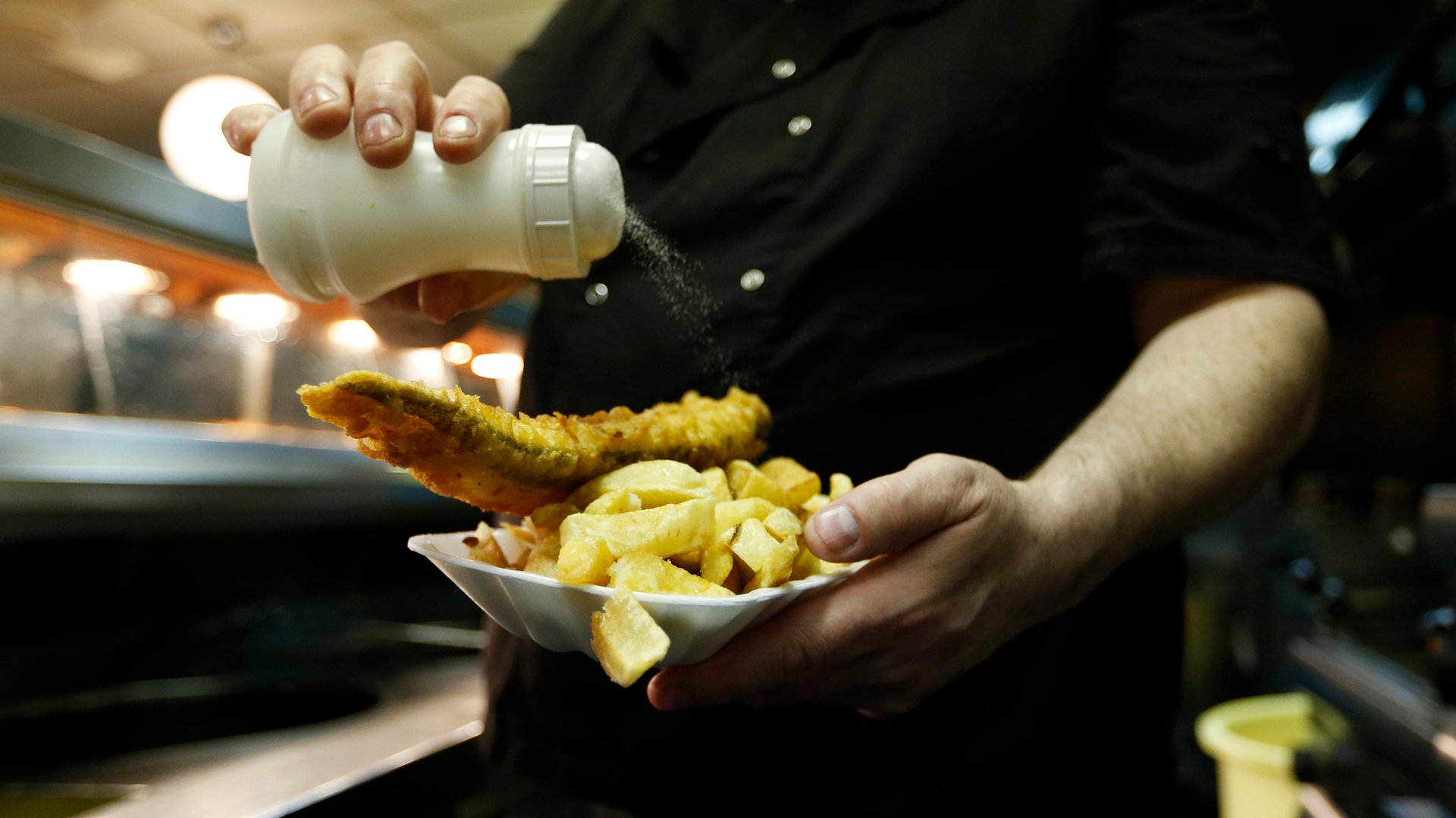Even your sea salt is almost certainly contaminated with plastic
What goes around, comes around, eventually. The latest karmic zinger is how likely you now are to find plastic particles, from packaging you might have once used, in your sea salt.


What goes around, comes around, eventually. The latest karmic zinger is how likely you now are to find plastic particles, from packaging you might have once used, in your sea salt.
Each year, humans dump 13 million metric tons of plastic into the ocean. Some of that plastic begins its life as tiny particles, such as microbeads in face scrubs and toothpaste; others as larger pieces that get broken down through mechanical or chemical means. Estimates vary, but there’s no doubt the amount of plastic now in the oceans is substantial: one 2014 study found that there are more than 5 trillion plastic pieces sharing the seas with marine life, 92% of which are microplastics less than five millimeters (0.2 inches) in size.
Of the many ways that microplastics make their way back to us, the simplest one is through the food cycle. Tiny marine organisms like krill ingest microplastics, which are about the same size as the zooplankton they feed on. The krill then get eaten by salmon, which eventually are served in restaurants around the world. Just in case mercury concentrations weren’t enough to show us the consequences of a fish-eat-fish world, persistent plastics are a painful reminder.
Now, a new study published in Scientific Reports shows us the reach of plastic contamination beyond fish. Researchers tested 16 sea-salt brands from eight countries to see if they could identify any foreign particles in their makeup. They dissolved the salt in water and examined what remained: a total of 72 particles. Of those, 30 were confirmed as plastic, 17 as pigment that once belonged to plastic, four as dust. Twenty one particles could not be identified. The variety of plastics identified in the chemical analysis meant that the particles were almost certainly contaminants from the sea, and not just contamination from the salt’s production.
The 16 salt brands came from Australia, France, Iran, Japan, Malaysia, New Zealand, Portugal, and South Africa. Only the one from France wasn’t found to be contaminated with plastic.
The concentration of the particles found in sea salt and sea food today is low enough that it likely won’t affect your health. But that may not be the case as we continue to dump more plastic in the ocean.
Erik van Sebille, an oceanographer at Utrecht University who studies ocean circulation and plastic pollution, told Hakai the findings, while shocking, weren’t unexpected. ”Plastic in the ocean is an atrocity; a testament to humanity’s filthy habits,” he said.